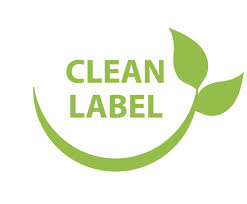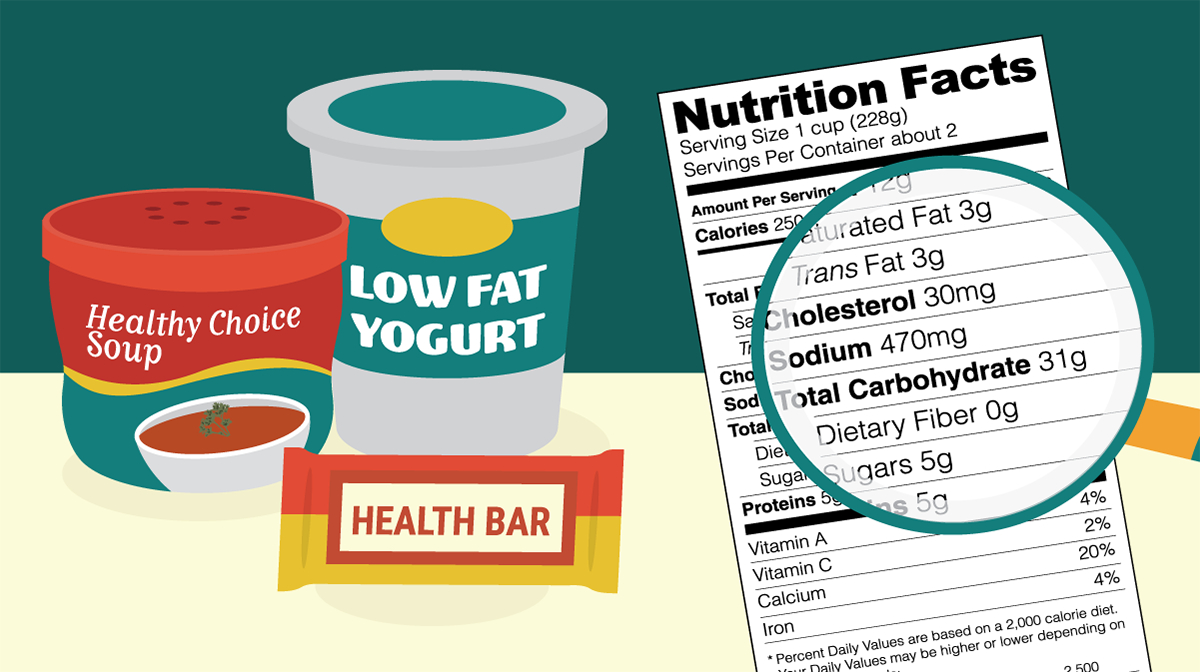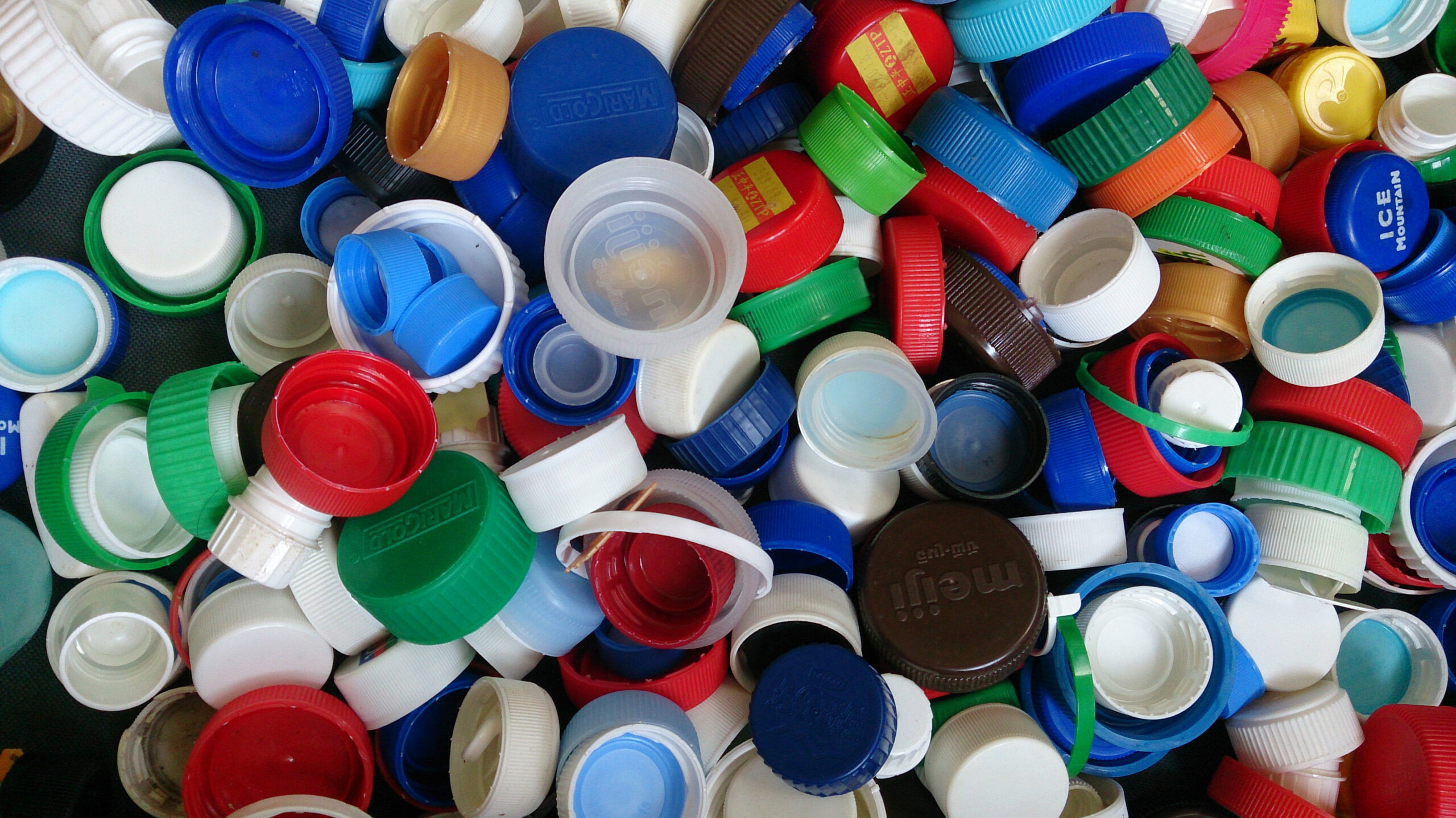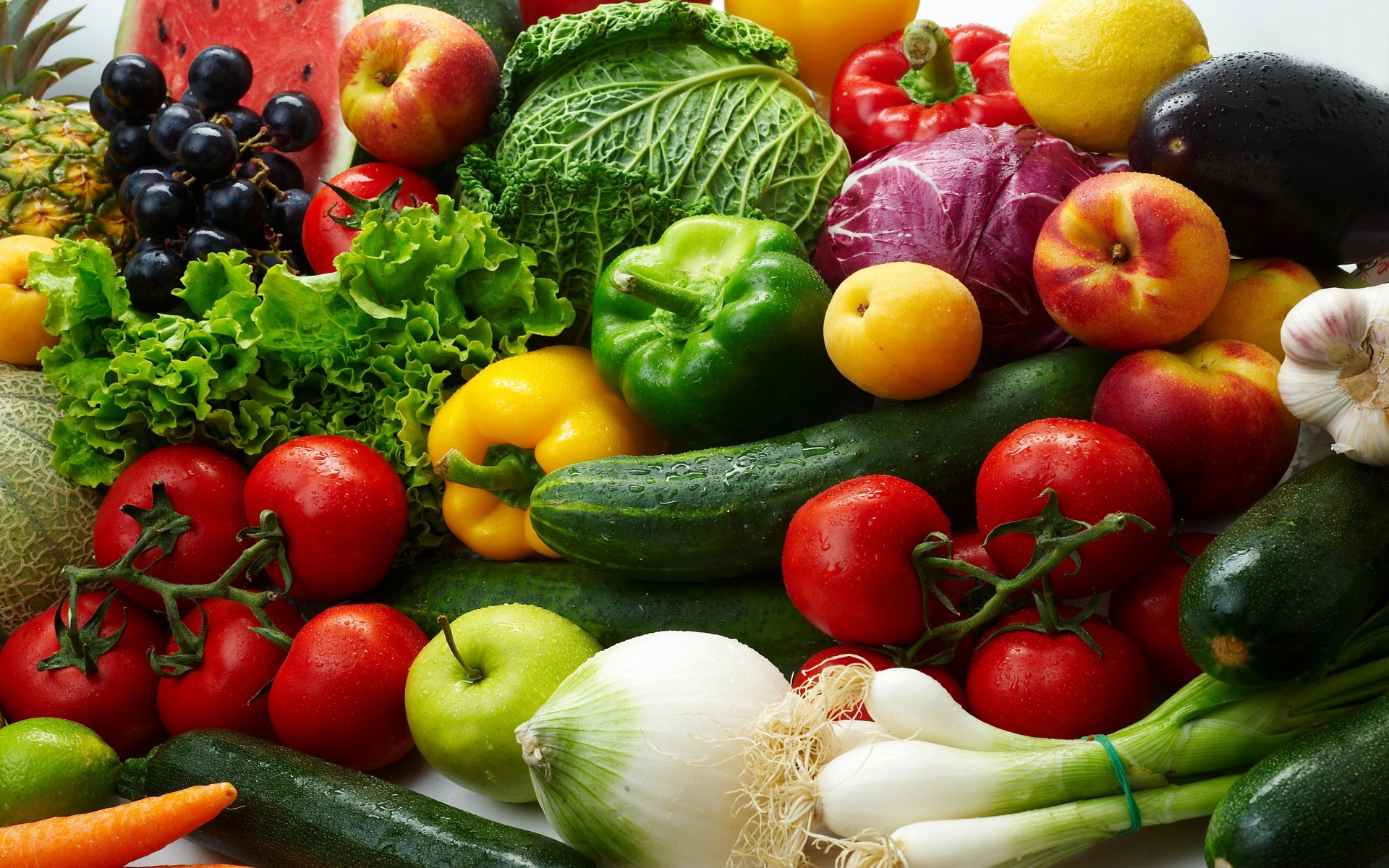The term “clean label juggernaut” refers to the powerful and fast-growing trend in the food and beverage industry towards products made with simple, natural, and easily recognizable ingredients. This movement reflects strong consumer demand for transparency and healthier choices, with a clear preference for products free from artificial additives, preservatives, and complex or unfamiliar ingredients. As a result, the clean label trend is reshaping the industry, driving companies to reformulate products to meet these evolving expectations.
Some of the key components and implications of the trend are listed below.
- Consumer demand: Consumers are increasingly seeking transparency when it comes to the ingredients in their food. They want to know exactly what they’re consuming, favouring products with ingredients that are easy to recognize and understand. This shift toward transparency reflects a broader demand for clarity and openness from food manufacturers, who are responding by simplifying labels to gain consumer trust.
Alongside transparency, the clean label trend taps into growing health and wellness priorities. Many consumers believe that simpler, more natural ingredients are inherently healthier, aligning with the widespread focus on well-being and nutrition. This perception drives choices towards products that promote a sense of purity and healthfulness.
Moreover, trust and authenticity play a crucial role in purchasing decisions. Products marketed with clean labels are often perceived as more trustworthy and genuine. Consumers feel reassured when they can easily identify ingredients, reinforcing the belief that such products are free from artificial additives and chemicals. This authenticity significantly influences buying behaviours, as shoppers increasingly equate clean-label items with quality and safety.

2. Market Impact: Many food and beverage companies are actively reformulating their products to meet the growing demand for clean labels. This involves removing artificial ingredients, such as colors, flavors, preservatives, and sweeteners, to simplify ingredient lists and align with consumer preferences for more natural and healthier options. The clean label movement is no longer niche; it has become a mainstream expectation, driven by consumers who prioritize transparency and ingredient clarity.
Retailers are also recognizing this shift, dedicating more shelf space to clean-label products. Marketing strategies increasingly highlight the natural and simple characteristics of these offerings to attract health-conscious buyers. According to recent consumer surveys, categories like baby food, meat, dairy products, and plant-based alternatives are where clean and natural ingredients are considered most essential. For instance, 39% of consumers say that clean labels are essential when purchasing baby food, while 50% prioritize clean ingredients in meat and poultry products.
This trend toward clean labelling is reflected across various product categories, from yoghurt and juices to packaged baked goods and snacks. As clean and natural products continue to gain importance, companies that adapt their offerings to meet these preferences will be better positioned for success in a market increasingly driven by health-conscious and ingredient-aware consumers.
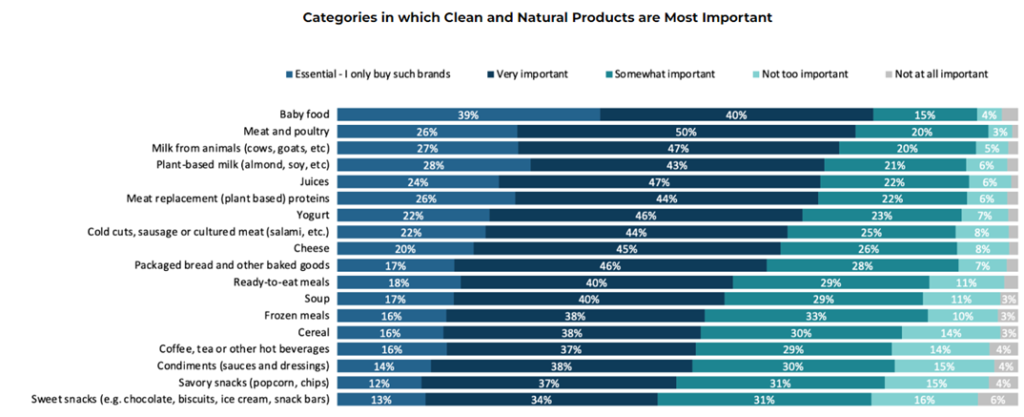
Image source – www.klinegroup.com
3. Regulatory and Certification: Governments and regulatory bodies are increasingly adopting stricter labelling standards to ensure greater transparency and accuracy in ingredient lists. This push for clear and truthful labelling aligns with consumer expectations for honesty and openness about what goes into their food. These labelling requirements not only hold companies accountable but also empower consumers to make informed choices about the products they purchase.
Certifications like Non-GMO, USDA Organic, Jaivik Bharat, and FSSAI Vegan are becoming more prevalent, playing a crucial role in helping consumers easily identify clean-label products. These certifications provide a sense of assurance and clarity, as they reflect rigorous standards that align with the principles of clean-label products. As these certifications become more widespread, they serve as valuable tools for consumers looking to avoid artificial ingredients and prioritize health-conscious choices.

4. Economic Growth: Consumer willingness to pay more for clean-label products has significantly influenced the profitability of brands embracing this movement. As health-conscious consumers increasingly seek out products with simple, natural ingredients, many are prepared to pay a premium for the transparency and perceived quality these products offer. This shift is motivating more companies to adopt clean-label practices, seeing it not just as a consumer preference but as a profitable opportunity in a competitive market.
The impact of the clean label trend is profound, with it now representing 33% of the total food and beverage market, as shown in recent reports (Source: www.foodmanufacturing.com). This growing demand, coupled with the premium pricing consumers are willing to accept, is pushing companies across various sectors to reformulate their products and meet the expectations for clean and natural ingredients. As a result, the clean label movement is not just reshaping product offerings but also altering the economic landscape of the food and beverage industry.
While consumer interest in clean labels has surged over the past decade, a single definition of what constitutes a clean label remains elusive. Initially, the clean label movement centred on health, emphasizing the removal of unhealthy additives. However, current trends show that many consumers now associate clean labels with transparency—often termed “clear label”—and environmental responsibility. This shift highlights a growing demand for products that prioritize not only health but also ethical and sustainable practices.
Consumer Opinions Vary
The top three meanings global consumers associate with clean label trends are the absence of additives, the use of natural ingredients, and environmentally friendly positioning. Consumers also believe clean labels should be a key focus for innovators, with more than 2 in 3 consumers globally saying they are somewhat influenced by clean labels. However, the meaning of clean labels seems to vary regionally. Asian consumers prefer clean label products that are environmentally friendly, while those in LATAM, North America, and Europe seek clean-label products without additives and preservatives (Source: Innova Market Insights).
New Product Development
A notable trend in the clean label market is that nearly one-third of new products feature some form of clean label claim. The most prominent claims in new product development (NPD) include ‘no additives or preservatives’ (15%), ‘organic’ (10%), environmental claims (8%), and both ‘GMO-free’ and ‘natural’ (5%). These claims are especially significant in children’s and everyday foods, with 70.6% of clean-label launches in baby and toddler products (Source: Innova Market Insights).

Overall, the “clean label juggernaut” signifies a major shift in consumer preferences and industry practices towards greater simplicity, transparency, and naturalness in food and beverage products. This trend is reshaping the industry, influencing everything from ingredient sourcing and product formulation to marketing and retail strategies.
How can we help?
Does the need of the hour seem harder to achieve? We can help you with that. We can investigate the technical and regulatory glitches in your industry/product and advise the precise track to optimize. Get in touch with us to know more about label review, clean labelling, and the certification process for your product.

